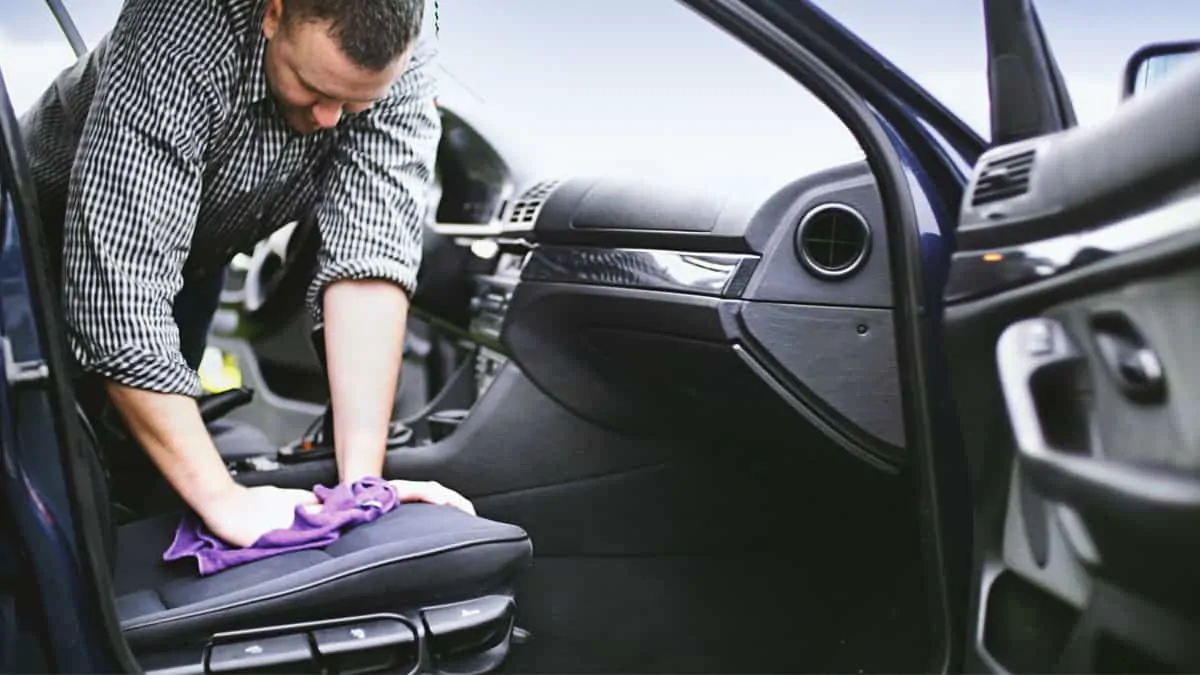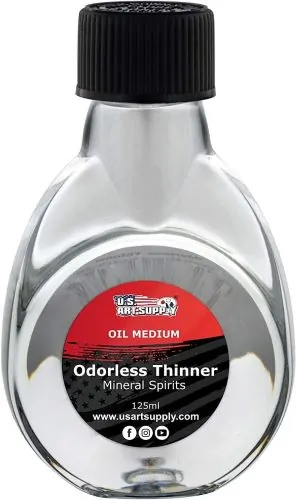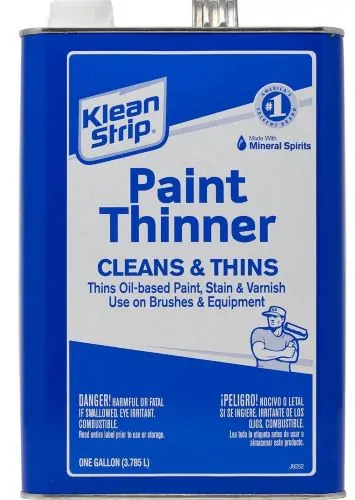A paint spill inside your car is enough to put anyone in a state of panic.
If left untreated, a paint spill can permanently damage the interior of your car. Spilled paint can reduce the resale value of your car at best, and will poison your passengers at worst – so it’s important to act quickly.
Thankfully, you can clean the paint spills with equipment found in most modern American homes. In this step-by-step guide, we will walk you through the process of how to remove spilled paint inside your car. If you’d like to skip ahead, please use the table of contents.
Remove Paint Equipment From The Vehicle
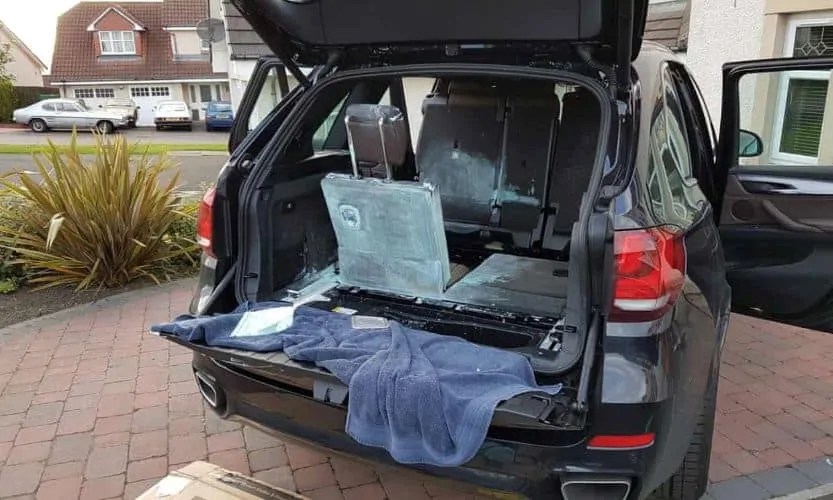
Before you can begin to clean a paint spill, it’s important to prevent further spills. Even in a hot, dry climate, the paint will take several minutes to dry – so you have time.
Start by removing the leaking paint tin from the car. If the tin is leaking from the base or sides, we recommend you place the tin in an object that will contain the spill – like a bucket filled with newspaper.
When storing your paint tin, ensure you keep it out of direct sun and heat. As the temperate of paint exceeds 77°F, the paint will thin out and spread faster and further. If your paint can is sealed or closed, it can become pressurized in hot weather – meaning it may explode after reaching 248°F.
Once you have cleared your car of paint products, remove anything else that the paint could reach. This includes car seats, floor mats, and any items in your car that aren’t secured to the vehicle itself.
Prepare The Area Around The Spilled Paint
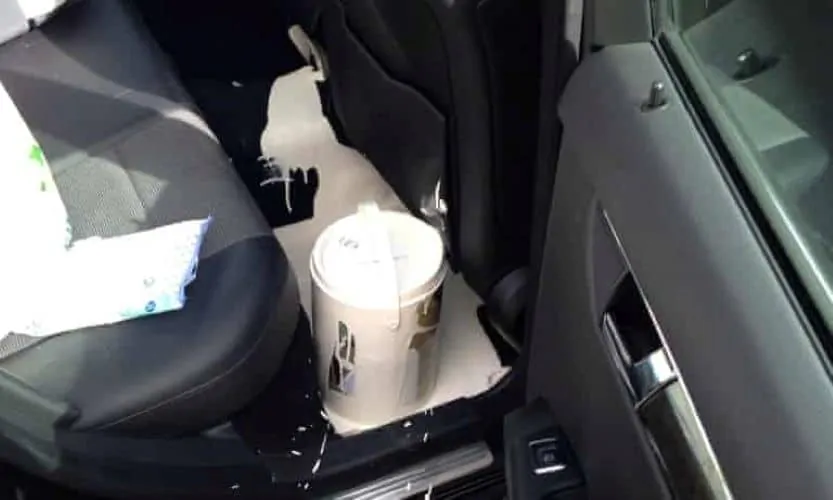
After removing all paint equipment from the area, you need to prepare to clean the spill. While it’s tempting to start cleaning as soon as possible, working with paint in a small paint can be very dangerous.
Before getting started, ensure you have:
Proper ventilation
Breathing in the Volatile Organic Compounds (VOC’s) in paint vapors can cause a number of short-term and long-term health problems, according to the American Lung Association. That ranges from dizziness and a runny nose to nervous system and organ damage – serious stuff.
To ensure the area around the spill is properly ventilated, we recommend you:
- Open all car doors and windows
- Use a mask, dust mask, or respirator at all times
- Turn on your car’s air conditioning, or use portable air conditioning while you clean.
- Take frequent breaks and stop cleaning if you feel unwell
If there are children or pregnant women in your environment, we recommend they stay clear of the paint. Exposure to paint’s VOCs has been shown to increase the risk of birth defects and negative health outcomes for both groups.
Adequate PPE
While we understand most people do not have a full hazmat suit in their home, using personal protective equipment can save your life. Exposure to VOC’s in the paint can occur through breathing in paint vapor or through physical contact.

To keep you safe, we recommend you use:
- Gloves
- Eye protection (whether it’s safety glasses, goggles, or a welders mask)
- A mask or respirator to protect you from inhaled VOCs.
Don’t be afraid to over-protect yourself. If you have a painting suit or extra PPE on hand we recommend you use it. Obviously, long hair should be tied back and you should do everything in your power to prevent yourself from touching the paint directly.
A safe space to work
Whether you own a monster truck or a city car suitable for a young driver, your working area is going to be quite small. To ensure you keep your environment safe while you clean, we recommend you:
- Park your car in a place where the spill can be assessed from multiple car doors (is possible)
- Push the seats around the spill as far away as possible
- Remove dogs, children, and people without adequate PPE from the environment.
Once you have gathered as much PPE as you can, you are ready to begin cleaning.
Remove Wet Paint
Wondering how to remove spilled paint inside your car? No matter whether you spilled spray paint, acrylic paint or water-based paint, the first step in cleaning up spills is to remove as much excess paint as you can.
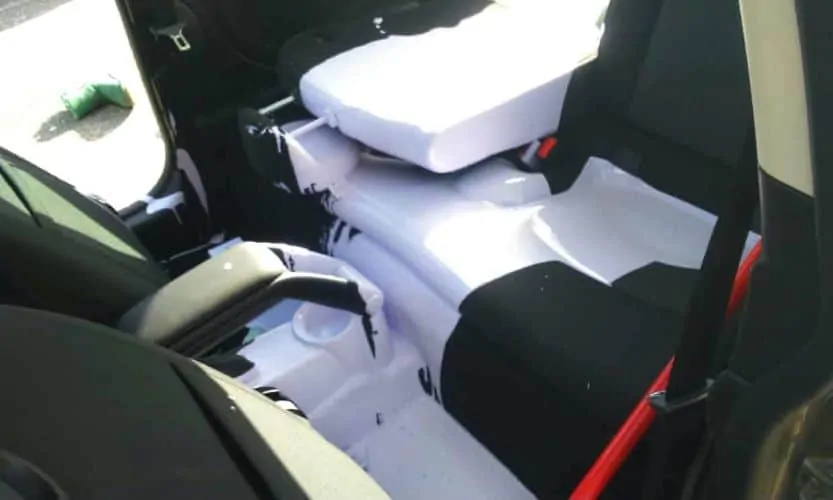
When cleaning up spilled paint, you will need a range of materials – no matter what sort of paint you are cleaning. While understand you will have to work with what you have on hand, we recommend you gather:
- A source of water (hose, buckets, water bottles).
- Rags for soaking up paint (towels, tissues, paper towel, rags)
- Plastic bags for used rags
- Car-suitable cleaning agents.
There is no one guide to car-suitable cleaning agents. If you have leather seats, you’ll obviously need a different cleaner than a person with polyester seats. Generally, however, here is a list of cleaning agents that won’t damage the interior of most vehicles:
- Dishwashing liquid and soap
- White vinegar (acetic acid)
- Mineral or baby oil
- Upholstery/ leather cleaner
- Borax (sodium tetraborate)
- Baking soda (sodium bicarbonate)
To avoid permanently damaging your pride and joy, we recommend that you avoid bleach, pure lye, acetone (damages plastics), and alcohol-based cleaners. Although they work great in the home, these cleaning-agents can discolor, stain, and damage your vehicle upholstery.
Generally, experts agree that there are three primary ways to remove wet paint. That includes soaking it up, gathering it up, and vacuuming it up. You may want to try a combination of these methods. The primary aim of this is not to remove all paint, but simply to remove 90% of the paint so you can clean the upholstery underneath.
A tip from TheCarXpert: Wet paint is far easier to clean up than dry paint. For a faster clean up and better results, keep the paint wet by spraying it with a small amount of water.
Soaking up paint
Although painters rarely find themselves cleaning up paint with household rags, an emergency paint spill often requires you to act quickly.
For this method, you will need towels, paper towels, or rags. As paint contains volatile liquids, towels and rags used to clean spills cannot be reused. We also recommend towels that are not frequently washed, like towels that are frequently exposed to laundry detergent can become hydrophobic (meaning they will absorb less liquid).
Wearing gloves, use these rags to soak up paint, placing the rags in a clean bag for disposal. If you opt for plastic bags, double layer your bags to prevent paint spills. At all times, keep this bag out of the heat and sun – as it will be prone to spontaneous combustion.
Soaking up paint may take several minutes, so we recommend you wear a mask, PPE and avoid long exposure to paint fumes.
Please note: keeping any materials used to clean up a paint spill can cause a house fire, as the volatile materials in paint can cause spontaneous combustion. After cleaning up your spill, you must dispose of all paint-soaked materials at your local solvent waste disposal site (sometimes called a ‘hazardous waste disposal site’).
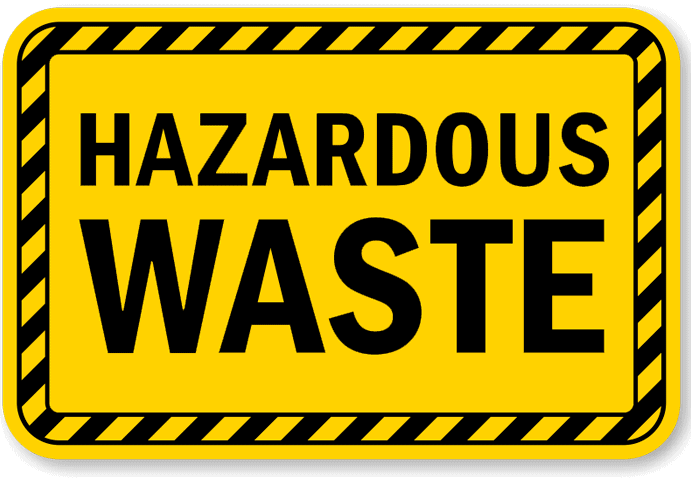
Scooping up paint
At its normal temperature, wet paint is thick enough that it can be scooped up with cleaning supplies. For this method, you will need a sealed container for paint and tools to scoop paint up with. In a pinch, you can use any of the following things:
- A dustpan and shovel
- A broom or mop
- Thick and large brushes
- Containers and lids
Whatever you choose to use, it cannot be reused – as paint contains many volatile materials that are hazardous and prone to combustion.
Wearing gloves, a mask, and PPE, use your tool to scoop paint into your sealed container. The paint you scoop up will have combined with dirt and dust, so experts recommend against using the paint again.
Whilst removing paint, please ensure you take regular breaks and wear proper PPE to keep yourself safe from harmful paint vapors.
Please note: although household tools can be washed, the volatile materials in paint emit paint vapors, and are also prone to spontaneous combustion. To keep yourself and your family safe, dispose of all paint-soaked substances at your local hazardous waste disposal site.
Vacuuming up paint
If you have an old vacuum around your home, you may want to use it to vacuum up the wet paint. Vacuuming paint is incredibly effective, as it is fast and will keep a safe distance between you and the paint spill.
However.
You should only use an old vacuum on paint, as the vacuum must be disposed of immediately. In theory, you could rinse your vacuum out and use it again, but experts do not recommend against this. While you can remove all visible traces of paint, paint vapors will remain – meaning your vacuum can release harmful vapors or can become a fire hazard.
Once you have vacuumed up paint, dispose of paint in a sealed container. While there is no problem with washing paintbrushes, washing large amounts of paint down the drain can be dangerous. Paint can clog up your drains and can damage your piping – so dispose of paint at your local hazardous waste disposal site where possible.
Determine What Sort Of Paint You Spilled
Once you have removed the majority of the paint spill, you will be left with a tough-to-remove stain on your pride and joy. Before you can remove this paint, you need to establish whether you spilled water-based paint, oil-based paint, or acrylic paint.
All forms of paint feature three primary components: pigment, vehicle, and a binding medium. The pigment is the color of paint, which changes with the color you choose, while a vehicle carries the pigment and binder until the paint dries. A paints ‘binding medium’ is the liquid that holds in pigment – which is either oil, acrylic, or water-based. You can see this composition below.
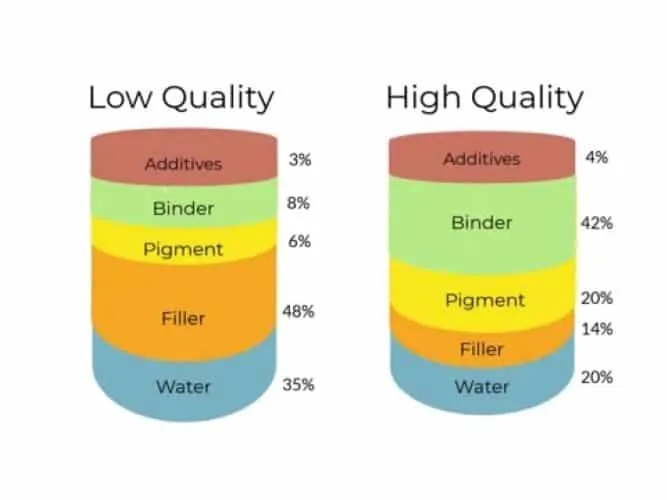
Oil-based paint
Oil-based paint uses oil as a binding medium for the paint color. The majority of oil-based paints use linseed oil, which is obtained from seeds of flax plants. Oil-based paint can be cleaned using ‘mineral spirits’, which is a cleaning liquid derived from petroleum. Some regions call mineral spirits ‘vegetable-based turpentine’.
An example of a mineral spirit is below.
If you do not have a mineral spirit cleaner on hand, oil-based paint can also be cleaned with:
- Dishwashing liquid
- Coconut oil
- Lemon juice
- Turpentine (note: we do not recommend using turpentine in vehicles, as it may cause discoloration on your car’s dashboard and upholstery).
If you skip ahead to here, you will find our tips for cleaning oil-based paint.
Acrylic paint
Acrylic paint is slightly different from water-based and oil-based paint, as it uses a synthetic vehicle (artificially manufactured and inorganic). This vehicle is usually made up of acrylic polymer or acrylic resin (polymethyl methacrylate). Acrylic paint dries incredibly quickly, as it is designed to allow water to evaporate. You can see this process below.
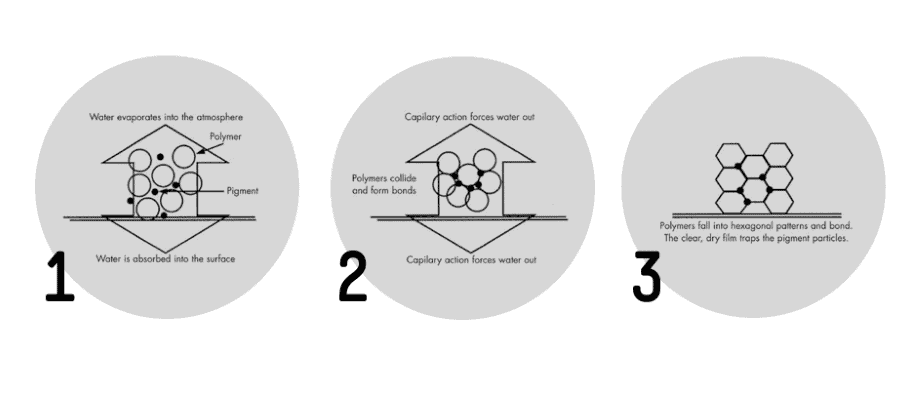
Generally, acrylic paints are manufactured with cadmium sulfide, pure cobalt powder, iron oxides, and titanium dioxide. When removing acrylic paint, we recommend one of these household cleaning agents:
- Dishwashing liquid
- Paint thinner
- White vinegar (acetic acid)
While ammonia and rubbing alcohol are very effective at removing acrylic paint, we do not recommend using these in a confined space like a car.
If you skip ahead to here, you will find our tips for cleaning acrylic paint.
Water-based paint
Water-based paint uses water as the binding medium, with acrylic polymers used to enhance the effectiveness of the paint. Water-based paint is very easy to remove when wet, and we recommend using the following household cleaning agents:
- Warm soapy water
- Dishwashing liquid
- Carpet, fabric and upholstery cleaner
- Lemon juice
- White vinegar (acetic acid) and baking soda
Remove Oil-based Paint
Oil-based paint is by nature hydrophobic, meaning it can be broken down using warm soapy water and mineral spirits. To remove oil-based paint, you will need sponges, two buckets, a solution of oil-based paint cleaner, and appropriate PPE (a mask, gloves, and eye protection).
While you can use a diluted solution of mineral spirits, we recommend mixing together this oil-based paint cleaner following our ‘how to remove spilled paint inside your car’ guide.
Oil-based paint cleaner
- 4 cups of warm water
- 2 tablespoons of liquid soap
- 1 – 2 teaspoons of mineral spirits or white vinegar (according to package specifications)
Mix this solution together in one bucket, and fill the other bucket with warm water.
Taking your sponge, squeeze this mixture over the entire surface of your paint stain. Leave this solution for 10 – 15 minutes, and reapply the mixture if it dries. This will begin to dissolve the paint spill, making it easier to remove.
After several minutes have passed, use a sponge or paper towel to wipe the excess mixture off of the stain. Take your sponge and work the mixture into the stain. Be careful to rinse your sponge every few seconds to ensure you remove paint as you go.
Work at the stain until you have removed the colour from the stain.
The linseed oil in oil-based paint can damage leather and carpet. To protect your vehicle’s beautiful interior, ensure you treat the surface with fabric stain remover after removing the paint. You may need to work fabric stain remover into the stain several times over the next week to restore your carpet to its normal appearance.
If you have spilled paint on seats, remove seat covers (where possible) and dry-clean to remove all traces of linseed oil.
Remove Acrylic Paint
Acrylic paint is designed to dry very quickly, so it is important to keep the paint stain wet throughout the cleaning process. To dissolve acrylic paint, you will need two buckets, a paint cleaning solution, sponges and globes, a mask, and eye protection.
We recommend mixing together the following cleaning solution following our ‘how to remove spilled paint inside your car’ guide:
Acrylic paint cleaner
- 5 cups of warm tap water
- 2 tablespoons of dishwashing liquid
- 1 tablespoon of white vinegar
- 1 teaspoon of mineral spirits (optional)
Mix these ingredients together in one bucket, and fill the other bucket with warm water and soap (optional).
Take the acrylic paint cleaner and a sponge and squeeze the mixture over the surface of your paint stain. Sitting by the stain, add another layer of the mixture every 2 minutes to prevent paint from drying. Continue this process for 10 – 20 minutes, wiping excess mixture with disposable towels when required. Do not let acrylic paint dry.
After soaking the stain, use your sponge to remove paint. Wash the stain using acrylic paint cleaner and circular motions. Every few seconds, rinse your sponge in your warm bucket of warm soapy water. You will need to continue this process until you have removed all of the visible colors from the paint stain.
Acrylic paint contains high amounts of VOCs, so ensure you work in a properly ventilated area. Do not allow children or pregnant women in the area while you clean (read why here).
A tip from TheCarXpert: If you choose to work with mineral spirits, be extra careful to ventilate the space you are working in. You can turn on your car’s air conditioning, use a portable cooler and take regular breaks. Mineral spirits may damage leather seats when used in large quantities.
Remove Water-Based Paint
Water-based paint is the easiest paint to remove from any surface. To dissolve the stain, you will need a sponge, two buckets, and your gloves, mask, and eye protection.
While any cleaning agent will be suitable, we recommend creating this cleaner and following our ‘how to remove spilled paint inside your car’ guide:
Water-based paint cleaner:
- 5 cups of warm tap water
- 2 tablespoons of dishwashing liquid
- 2 tablespoons of white vinegar or 1 teaspoon of baking soda (sodium bicarbonate)
In one bucket, mix this cleaner until it is fully dissolved. Fill the second bucket with warm water.
Take your water-based paint cleaner and sponge and squeeze the cleaner over the entire area of the stain until it is fully covered. Leave this for 5 – 10 minutes. This will allow the mixture to dissolve into the paint, where it will begin breaking down the composition of the paint.
After 5 – 10 minutes have passed, use a towel to wipe away the excess cleaner. Using the water-based paint cleaner, take your sponge, and work more of the cleaner into the stain. Use circular motions to scrub the paint out of your car interior. Use the second bucket of warm water to rinse the sponge – ensuring you are changing the bucket’s water every few minutes.
To avoid harmful exposure to paint fumes, take regular breaks as required.
Using this method, work at the paint stain until the color has disappeared from the stain. You may need to create more paint cleaner if you have spilled a large amount of paint.
A tip from TheCarXpert: This cleaning recipe uses white vinegar (acetic acid) or baking soda (sodium bicarbonate). Vinegar is incredibly acidic while baking soda is incredibly basic. If used together, vinegar and baking soda will not work as effectively – as they will neutralise each other.
Assess Whether You Need Further Help
After you have worked at the stain for a while, and followed our ‘how to remove spilled paint inside your car’ guide you may find you require some extra help. At this point, you have several options.
If you have worked the majority of the color out of the stain, you may simply be looking at a large wet stain. You can always wet paint with water, so try leaving the stain to dry to fully assess the damage.
After the paint has dried, you can try working it out of your car interior with a number of tools, including:
- A paint scraper
- A disposable razor
- A blunt butter knife
If you are working with oil-based or acrylic paint, you may want to consider trying a paint thinner. Paint thinners are designed to break down the pigment in paint. For this reason, paint thinners can often stain the interior of your car long term. Most paint thinners involve a number of cleaning agents, including mineral spirits, acetone, turpentine, and naphtha.
As paint thinner releases poisonous vapors, we only recommend using paint thinner as a fall-back option. Always adhere to the manufacturer’s requirements, and never use paint thinner in an unventilated space.
While many paint spills can be cleaned up at home, other spills may require the help of a professional. Your local garage may not have the right equipment to clean a paint spill, so look for a business that offers “car interior repairs”.
Although this is an emergency, you are well within your rights as a customer to call multiple garages and get quotes before committing to a price.
Ventilate Your Vehicle
After you are satisfied with your cleaning progress, it is essential to properly ventilate your vehicle. While you have removed over 98% of the paint, the vapors from paint and VOC’s can remain in your upholstery.
Long term, this can cause a range of health problems for you and your family – including cancer.
Where possible, ventilate your vehicle for 48 – 72 hours before use, and keep the vehicle in a shaded area (like a garage). If the smell is overpowering, you may need to consider a professional clean.
If you experience any of the following symptoms, consult a health care provider immediately:
- Headaches
- Nausea
- Trouble breathing
- Dizziness or light-headed feelings
- Eye, nose or throat irritation.
A tip from TheCarXpert: Paint fumes may remain in your vehicle for several weeks after a major spill. While driving, please ensure you keep windows open to ensure ventilation or consult a professional if concerned.
Frequently asked questions (FAQ)
How Do I Get Dried Paint Off My Car Interior?
You can remove dried paint from your car interior by wetting the paint and using a blunt object to shave the paint off. We recommend trying a disposable razor, a blunt butter knife, or a paint scraper. If this doesn’t work, you may want to try paint thinner.
What Is The Best Thing To Use To Clean The Inside Of Your Car?
The inside of your car can be cleaned with a range of regular household cleaning agents, including dishwashing soap, multi-purpose spray, white vinegar, and warm soapy water. If you have leather seats we recommend using a suitable leather cleaner.
What Is The Difference Between Water-based Paint And Acrylic Paint?
Paint uses three essential elements: the color pigment, the binding medium, and the vehicle. Water-based paint uses water as a binding medium to hold in color, while acrylic-paint uses a synthetic substance as a binding medium. Acrylic paint also uses acrylic polymer or acrylic resin as a vehicle. Oil-based paint is also a popular alternative to acrylic paint and uses linseed oil as a binding agent.
Are Clorox Wipes Safe For Car Interiors?
Clorox wipes are an alcohol-based product, meaning they can damage the appearance of your dashboard and leather seats. Clorox wipes are safe to use sparingly on your car’s carpet and fixtures, but only when your car is appropriately ventilated during and after cleaning.
Is Vinegar Safe For Car Interiors?
White vinegar is safe for most surfaces on your car’s interior. Vinegar is made with 5% – 10% acetic acid and is diluted with water. To use vinegar in your car, we recommend mixing a tablespoon of white vinegar with a cup of warm water. If your car has leather seats, you may want to add some olive oil to give your seats a bit of extra shine.
What Household Products Can I Use To Clean My Car Interior?
Your car interior can be cleaned with a wide range of household cleaning agents, including warm soapy water, dishwashing liquid, white vinegar, multi-purpose spray, carpet cleaner, and fabric stain remover. Do not use ammonia, bleach, turpentine, or alcohol-based cleaners in your car.
How To Remove Spilled Paint Inside Your Car?
You can clean spilled paint using warm soapy water and dishwashing liquid. Do not use blunt objects to remove paint, as it will damage your car’s paint job. Do not use any alcohol-based cleaners, paint thinners, acetone, or mineral spirits on your car’s exterior. Consult a car care specialist if the stain persists.
How Do I Clean My Car Dashboard?
The easiest way to clean your car’s dashboard is to use a sponge and sparing amounts of warm soapy water or dishwashing liquid. If dust is a frequent problem, invest in a small microfibre towel. Do not use alcohol-based cleaners on your dashboard, as it will damage the dashboard’s appearance. Nissan has produced a great infographic for car-cleaning, which you can see below.
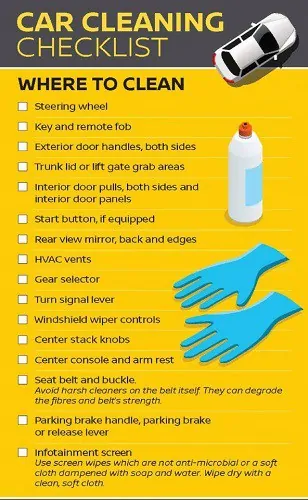
Conclusion
Removing spilled paint inside your car can be tricky – but there is no reason to panic. Just follow our guide to how to remove spilled paint inside your car, and give it your best shot. Most paint spills can be cleaned up with simply some time, effort, and the help of common household cleaning agents.
If in doubt, remove all the wet paint you can and work at the stain using warm soapy water. Paint is designed to be hardy, but it’s not indestructible.

Garry is the happy owner of a funky 2018 Nissan Juke Ti-S AWD. After growing up around his family’s mechanics shop, he is passionate about bringing budget-friendly car care to every driver. Garry has a business degree and is a car enthusiast.

